Excerpt of a Letter to the New York Times, December 4, 1948, from Albert Einstein and other prominent Jews.
Attack on Arab Village
A shocking example was their behavior in the Arab village of Deir Yassin. This village, off the main roads and surrounded by Jewish lands, had taken no part in the war, and had even fought off Arab bands who wanted to use the village as their base. On April 9 (THE NEW YORK TIMES), terrorist bands attacked this peaceful village, which was not a military objective in the fighting, killed most of its inhabitants —— 240 men, women, and children —— and kept a few of them alive to parade as captives through the streets of Jerusalem. Most of the Jewish community was horrified at the deed, and the Jewish Agency sent a telegram of apology to King Abdullah of Trans-Jordan. But the terrorists, far from being ashamed of their act, were proud of this massacre, publicized it widely, and invited all the foreign correspondents present in the country to view the heaped corpses and the general havoc at Deir Yassin.
What drove these particular Jews to commit the above atrocious insane massacre of fellow human beings including children Einstein described?
In 2023, what drove members of Hamas to commit horrific massacres of fellow human beings. Well, for eight decades the army, navy and especially the warplanes of violence prone Revisionist Zionist Israeli governments have over the years (at times with religious backing from a few Rabbis) openly massacred thousands of Palestinian civilians and their children, who for many years have been held captive in their own land as an open air prison. All justified by an Israel constantly having to defend itself from Palestinian Arabs seeking justice, and who have never reconciled themselves to their loss nor given up getting their lands and homes back.
An understanding of the criminal insanity in the case of Jewish and Palestinian massacres can be found in the archives of history.
Palestinians were forced off their lands or fled en masse from deadly Jewish attacks during the civil war ignited intentionally by the announcement of a never-meant-to-be-implemented Partition Plan forced through a yet tiny United Nations by the United States that would eventually result in a Jewish population of 630,000 militarily occupying 77% of what had been British misgoverned Palestine, containing an Arab population of 1,970,000. This injustice of making refugees of so many Arab Palestinians whose homes and orchards were seized by Jews, is the basis for 75 years of massive bloodshed.
In 1956, Israeli Chief of Staff Gen. Moshe Dayan, commander of the Jerusalem front in the 1948 Arab–Israeli War, spoke at a funeral:
Let us not cast the blame on the murderers today. Why should we deplore their burning hatred for us? For eight years they have been sitting in the refugee camps in Gaza, and before their eyes we have been transforming the lands and villages, where they and their fathers dwelt, into our estate… a sea of hatred and desire for revenge is swelling.
Einstein had made his position clear the year before American power over an incipient United Nations of only 56 nations, produced the genocidal stratagem of torching the Holy Land with a phony, never expected nor intended to be implemented resolution for a crazy quilt partition of Palestine into six noncontiguous areas; the Arab areas entirely noncontiguous; the Jewish areas contiguous by a thread; the designated major area for Jews containing more Arabs than Jews, and meant to immediately provoke a civil war prepared for and expected by the Colonial Powers supported and well armed Revisionist Zionists leadership. With the announcement of the UN vote for partition (adopted by a vote of only 25 in favor versus 32 against, abstaining or absent), the fully expected bloodshed began.
Map of the UN proposed partition in 1947.

The UN Representative of Egypt had asked for an advisory opinion on the legal issues from the International Court of Justice. His delegation denied that the General Assembly had any power to decree the partition of Palestine, and described the partition plan as “shameless illegality,” contrary to the principle of self-determination for the overwhelming majority of the people of Palestine.
More than a year before this civil war producing vote, Albert Einstein made headlines in the New York Times, “Einstein Urges United Nations Run Palestine,” February 15, 1946:
A government in Palestine under the UN’s direct control and a constitution assuring Jews’ and Arab’ security against being outvoted by each other would solve the Jewish-Arab difficulties.
Unfortunately what uncomfortable realization of the enormity of American and European society’s complicity in the Holocaust there was, formed a backdrop for additional basic business considerations entertained by many of the same influential U.S. politicians beholden to Wall Street’s war investment avarice and economic crime in rearming Germany. Highly placed villainous capitalist gangsters saw an imperialist opportunity to make racist use of the plight of a quarter million ‘undesirable’ Jewish Holocaust survivors to create a client colony of armed Europeans in the midst of oil rich Muslim countries.
If the alternate UN plan for an independent and democratic Palestine would have not been suffocated by colonial power politicking, Jews would have had the access to the entire Mandate of Palestine. In this kind of imagined format, how easy it might have been for Yehudi Menuhin’s “only possible solution” to have developed, namely, the kind of federated republic that is French-German Switzerland (the Italian part could have been thought of as comparable to autonomous areas for the Druze and Bedouin population).
A one state solution and two state solution at the same time. With all the intellectual prowess that immigrating Jews were bringing as engineers, doctors, scientists and workers knowledgeable in advanced technology, and the international financial connections available to their leaders, both sides might have opted to stay mixed, legislating a great degree of regard for cultural, religious and distinctions that would see Jews sharing economic social benefits with Arabs in a Israel-Palestine smack in a sea of Arab nations accepting a Jewish lead in the economic affairs of a prospering single unique mixed Jewish-Arab state.
Following the end of World War I, the region of Palestine had been conceded by the Ottoman Empire and was placed under the rule of the British via a mandate from the League of Nations.
The mandate was criticized for not taking into account the wants and needs of the Palestinians who resided in the land and wanted independence.
Einstein had declared difficulties between Jews and Arabs were largely artificially created by the British. He criticized the British colonial policy as based on the principle of “divide and rule,” and charged the British administration with using the ex-Mufti of Jerusalem to foment trouble. Questioned as to what he would do if Arabs resisted the immigration of Jews from Europe into Palestine, Prof. Einstein replied, “This will not be the case if they are not incited.”
I am in favor of Palestine being developed as a Jewish Homeland but not as a separate state. It seems to me a matter of simple common sense that we cannot ask to be given political rule over Palestine where two thirds of the population are not Jewish. (January 19, 1946)
On January 11, 1946, in an Address by Einstein at the Manhattan Opera House to the National Labor Committee for Palestine, Einstein spoke of what he saw as the basic human problem in Palestine, namely, colonialism, British Empire colonialism,
the difficulties between the Jews and Arabs are artificially created, and are created by the English.
The uncivilized behavior of the British during the Arab war for independence that was at its height 1938-39, (but always referred to as merely a revolt), included bombing attacks on Arab villages carried out by the RAF, at times razing whole villages. In June 1937, the British imposed the death penalty for unauthorized possession of weapons, ammunition, and explosives, … this order was directed primarily against Palestinian Arabs and most of the 112 executed in Acre Prison were Arabs hanged for illegal possession of arms.
Concurrent Reactions and Observations of Albert Einstein on Early Zionism and the Pressure Upon It that Would Change the Leadership from Socialist Labor to Revisionist Socialist and Ultimately to a War Planning Eventual Tool of Western Imperialism.
Einstein, a strong and outspoken socialist, (see his ‘Why Socialism?’) followed the progress of Jewish settlement in the British Mandate, and when, in the 1930s, international socialist Zionism came under pressure from the political right, he wrote,
Under the guise of nationalist propaganda Revisionism seeks to support the destructive speculation in land; it seeks to exploit the people and derive them of their rights.
Quoting below perceptive writings of Albert Einstein during the morphing of a Zionism that had begun as Cultural and International Socialist Labor Zionism into its domination by militant Revisionist Zionism and terrorist Zionism.
One of the Zionist paramilitary organization that operated in Mandate Palestine between 1931 and 1948 was the Irgun. In 1938, the Irgun instituted a wave of bombings against Arab crowds. On July 6, 21 Arabs were killed and 52 wounded by a bomb in a Haifa market; on July 25, a second market bomb in Haifa killed at least 39 Arabs and injured 70; a bomb in Jaffa’s vegetable market on August 26, killed 24 Arabs and wounded 39. In August 1945, Einstein was publicly sharply critical of the Jewish underground paramilitary groups, such as the Irgun and the Stern Group. In his words, “I regard it [the Irgun] as a disaster” (Interview with I.Z. David). Also: “I am not willing to see anyone associated with those misled and criminal people.”
So much for this Einstein corroborated bit of historical background of Palestine before the UN Partition vote was announced torching British ruled Palestine into civil war and almost continues terror since the seizing of Arab land with the founding of the Israeli state.
The multi-nation Holocaust and the civil war in Palestine afterward was made possible to begin with because American corporations had armed Hitler’s Germany for War on Russia.
– For if no rearming of a weak economically prostate totally disarmed Nazi Germany by USA’s largest corporations breeching the Versailles Treaty’s prohibitions of German rearmament while the British and French military stood down, then no Second World War
If no Second World War, then no multination Holocaust of nearly six million Jews.
If no multination genocide of Jews, then no desperate quarter-million survivors of the Holocaust refused refuge to manipulate.
And no belligerent apartheid State of Israel assisting Western genocidal destruction of oil rich Middle East and African Nations.
The Wall Street-led economic and military facilitation of the Second World War and the multinational Holocaust is the immediate history of the murderous founding of the modern and as yet incomplete state of Israel at the cost of Arab and Jewish lives and what could have been a Jewish and Arab led vibrant and dynamic mixed society in Palestine. The British Empire mismanaged racist colonization of Palestine for the Empire’s own imperialist benefit is its ugly pre-history.
When the Holocaust reached mega horrific proportions with massacres of hundreds of thousands, these genocidal events went unreported or reported in the back pages of only a few newspapers in the United States and England, and basically ignored by the press and radio in most of Europe and the rest of the Colonial Powers dominated world. After the war ended, the poor and desperate Holocaust survivors were treated inhumanely and as undesirables, refused refuge in the United States, and then were most cruelly used by the elite of the Anglo-American world ruling financial cabal in a devilishly and merciless typical colonial crime against humanity in which they were forced to fight a civil war in what had been British occupied and ruled Palestine as British troops withdrew.
For seventy-four years, the same Colonial Powers, who forced through passage of the criminal United Nations Partition Plan for Palestine with intention to bring about civil war in British ruled and occupied Holy Land, have kept up a murderously deceitful pretense of trying to bring peace to Palestine and the oil rich Middle East nations they have continually attacked, recently destroying Iraq, Libya and Syria.
Israel’s Religious Justification and Mass Murderous Overkill
As to the neocolonial genocide-backing media citing Revisionist Zionist religious claims on the Holy Land for it having been a Jewish Kingdom in ancient times, one might note that amazingly, according to the Ottoman Empire census of 1850, there were less than twenty thousand Jews in all Palestine. So many thousands had migrated to the more developed countries of Europe where they periodically over the centuries suffered deadly treatment, very often fleeing to Muslim nations.
Nowadays, with the term ‘terrorist’ in wide use, this peoples historian attention is drawn to the horrific passages in the bible describing the heavenly instructions given to the Jews to slay every person and animal in Jericho and other conquered cities.
One can chose between the following Biblical ‘justification’ for terror and what Jewish Albert Einstein thought.
Exodus 23:31
“I will establish your borders from the Red Sea to the Sea of the Philistines, and from the desert to the River. I will hand over to you the people who live in the land and you will drive them out before you.”
Ezekiel 47:19
“On the south side it will run from Tamar as far as the waters of Meribah Kadesh, then along the Wadi of Egypt to the Great Sea. This will be the south boundary.”
Genesis 15:18
“On that day the Lord made a covenant with Abram and said, “To your descendants I give this land, from the river of Egypt to the great river, the Euphrates.”
Deuteronomy 2:16
“You must not let any living thing survive among the cities of these people the Lord your God is giving you as an inheritance. 2:17 You must completely destroy them—the Hethite, Amorite, Canaanite, Perizzite, Hivite, and Jebusite—as the Lord your God has commanded you, Christian Standard Bible (CSB)
Rabbi Dov Lior, a national-religious leader and the chief rabbi of Kiryat Arba and Hebron, published a letter on Monday saying that Jewish law permits destroying the entire Gaza.
Israeli pilots know that they kill children when dropping massive amount bombs on city centers, the bombardment these pilots carry out resulting in the death of exponentially more civilians, including children, than in the Hamas attack. Western media outlets portray the pilots as heroes who did not intend to kill non-combatants – euphemistically termed “collateral damage.” Have the pilots been made to feel that God is on their side in any and all circumstance? During the 2014 bombing that took 2,200 lives? During the abominable bloody massacre at Sabra and Shatila? During the long merciless war in Lebanon? All to protect the land ‘God gave their ancestors’ more than seventeen centuries ago.
Albert Einstein letter to Jewish philosopher Eric Gutkind dated January 1954:
For me the Jewish religion like all other religions is an incarnation of the most childish superstitions. And the Jewish people to whom I gladly belong and with whose mentality I have a deep affinity have no different quality for me than all other people… I cannot see anything ‘chosen’ about them.
In spite of Einstein’s efforts, the Palestinians Arabs, while still suffering British military occupation as a colony since the end of the First World War, became expelled and/or re-colonized after the Second World War by another group of armed Europeans through a genocidal civil war planned and provoked by Anglo-American machinations.
The State of Israel from its creation has been in bed with a US war investing business elite that once heavily invested in Hitler, was itself anti-Semitic in outlook, coldly indifferent and even complicit during the Holocaust its investments had made possible.
The billions of US dollars spent on munitions and weapons of mass destruction to kill Palestinians who keep on attacking fighting for rectification of the heartless injustice done them, could have been used to begin to compensate Arabs made destitute refugees by the criminal seizure of their lands, homes and properties.
Cautionary
The U.S. forced-through United Nations plan for the partition of Palestine must be recognized as having been intended to torch British ruled Palestine. This a prearranged stratagem, while British forces were withdrawing, was an archetypal Colonial Powers crime against humanity. The same genocidal warfare and misery that was calculated and expected, will continue and spread.
The catastrophic genocidal events of October 2023 in Palestine augur an end to U.S. world domination and exploitation of majority humanity that has been made to suffer under wars of America’s ‘Rules Based Order,’ formerly referred to falsely as ‘The International Community,’ earlier ‘The Free World,’ and initially ‘The Colonial Powers.’ The October 2023 horror has brought needed attention to the continuing saga of U.S.-backed Israel’s mass-murderous, neo-colonial injustice toward the Palestinians ongoing now for 73 years.
If the corporate war investors that control the United States can be prevented from starting the Third World War, a multi-polar world might phase out wars promoting capitalist corporations and promote negotiations in Israel-Palestine, and end the horrendous massacres — October 2023 notwithstanding.
ENDNOTES
This post was originally published on Dissident Voice.




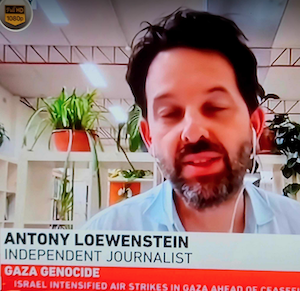

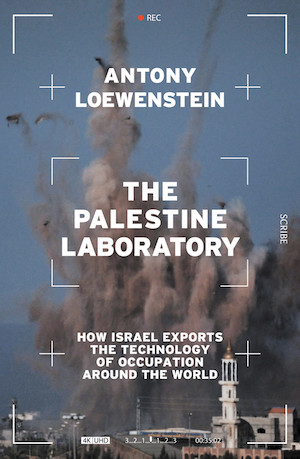 Loewenstein warned in his book before the conflict began that “an Israeli operation might be undertaken to ensure a mass exodus, with the prospect of Palestinians returning to their homes a remote possibility” (p. 211).
Loewenstein warned in his book before the conflict began that “an Israeli operation might be undertaken to ensure a mass exodus, with the prospect of Palestinians returning to their homes a remote possibility” (p. 211).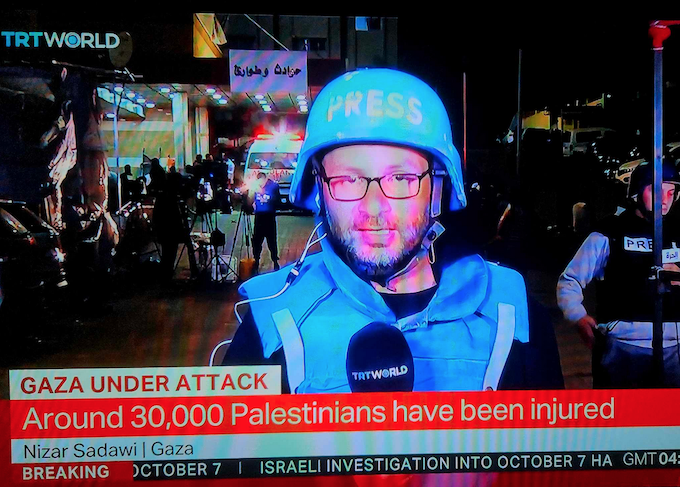
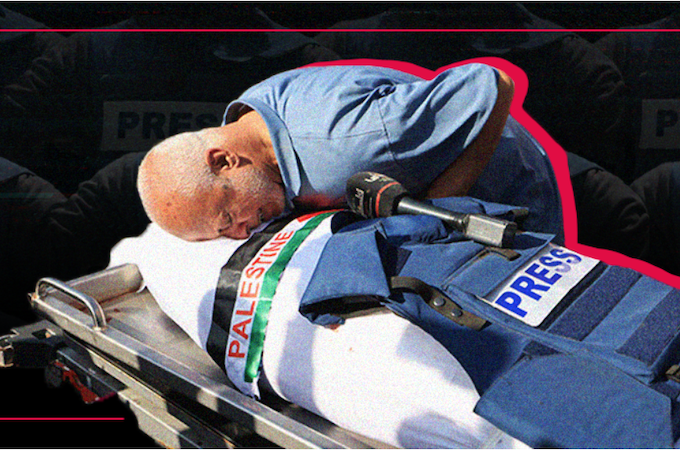


 Beverly Hilton
Beverly Hilton Plum Bistro
Plum Bistro Field Roast
Field Roast Mikkel Bergmann
Mikkel Bergmann Watercourse Foods
Watercourse Foods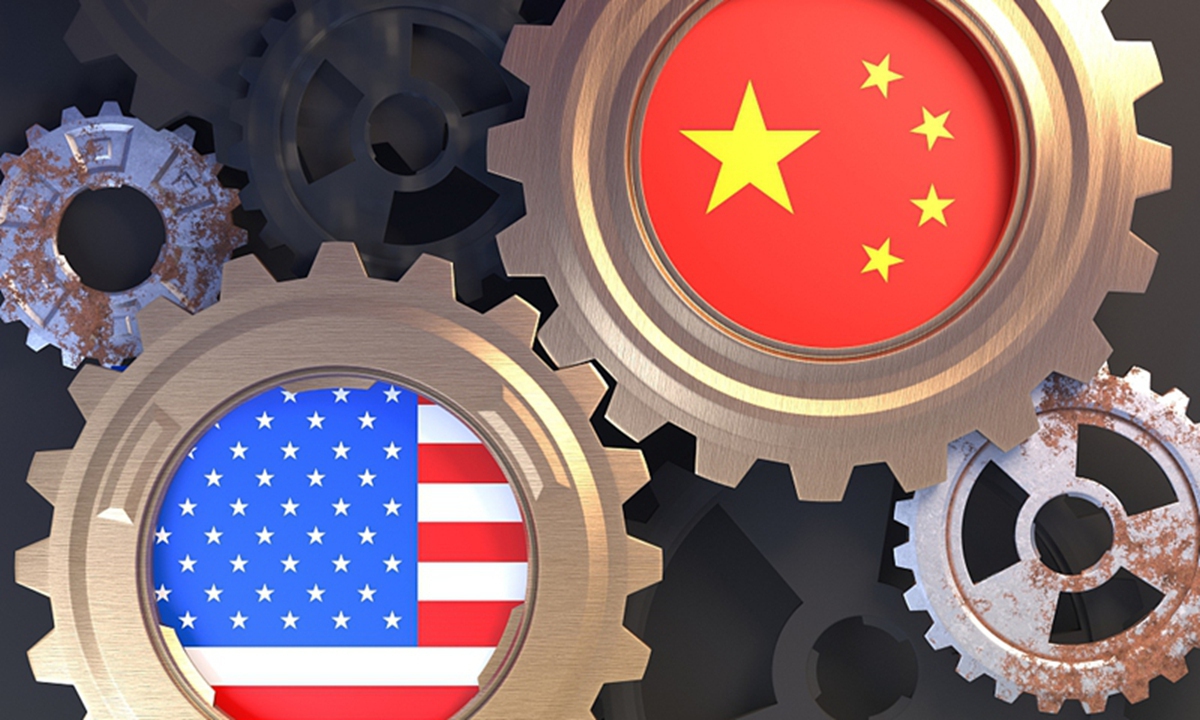



 (@studiopixie)
(@studiopixie) 


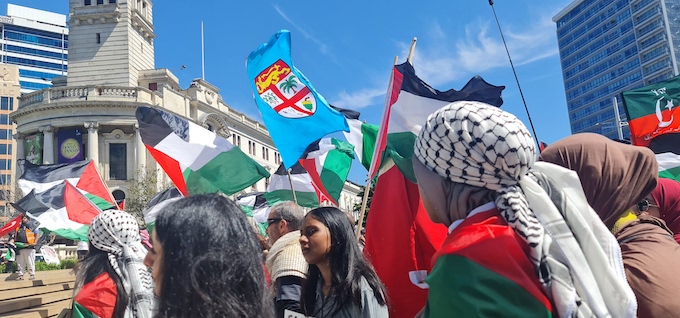

 INTENT TO KILL
INTENT TO KILL We are saddened to report that we were unable to halt transportation of refugees to the prison — the driver rammed through the block, risking killing those in front.
We are saddened to report that we were unable to halt transportation of refugees to the prison — the driver rammed through the block, risking killing those in front. We needed more people. We can't do this alone. Join the call:
We needed more people. We can't do this alone. Join the call: